The Night March into Fredericksburg, May 2-3, 1863
The orders made no sense. Their recipient lacked the creativity to make them work. The Union army dawdled as its commanders traded confused messages, while Lee and Jackson struck their masterpiece victory. To explain why Joseph Hooker’s Chancellorsville campaign failed, one must understand what he did not at the time—the situation at Fredericksburg. John Sedgwick’s Sixth Corps was first just a feint to distract the Confederates but then became the hammer necessary to fall on Hooker’s anvil. Eventually and unrealistically, they were to be the Army of the Potomac’s savior, and ultimately, they became a scapegoat for its defeat.
At the outset of the Chancellorsville campaign, Hooker divided the Army of the Potomac commander into two wings. He would command the right, Sedgwick the left. Dan Butterfield connected the two from his headquarters at Falmouth. Elements of Sedgwick’s wing crossed the Rappahannock River south of Fredericksburg on the morning on April 29th. They restlessly waited in their fortified bridgehead for four days while four corps took a wide route west to outflank the Fredericksburg defenses. Hooker kept borrowing from Sedgwick’s force until only the Sixth Corps and John Gibbon’s Second Corps division remained. With the Union left wing inactive below the Rappahannock, Lee decided the columns marching through the Wilderness posed a greater threat and brought the bulk of the Army of Northern Virginia west to fight.
In case the Union commander decided to give his largest corps a bigger role, Lee left Jubal Early’s division on the hills south of Fredericksburg and William Barksdale’s Mississippi brigade in the city they had defended the previous December. The two sides warily watched one another as the opening salvos to the west announced the beginning of the Chancellorsville battle.
On the second day of the battle, as Stonewall Jackson marched around the Union flank and Hooker’s subordinates fumed at his caution, Sedgwick finally received word from Hooker, via Butterfield, to advance. “The major-general commanding directs that General Sedgwick cross the river as soon as indications will permit; capture Fredericksburg with everything in it, and vigorously pursue the enemy. We know that the enemy is fleeing, trying to save his trains. Two of Sickles’ divisions are among them.”[1] Sedgwick must have wondered if Hooker even remembered where the Sixth Corps was located. Two full divisions, plus his light division, had already crossed to the Confederate side of the river and took up position south of the city.
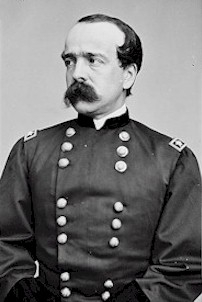
Furthermore, irregularities in the telegraph wire complicated everything. Butterfield was supposed to link Hooker and Sedgwick, but the middle man only muddled matters. Hooker sent the directive to Sedgwick at 4:10 p.m., an hour before Jackson’s flank attack commenced. Butterfield did not receive and forward a copy until 5:50 p.m., by which time Hooker’s plan had unraveled.
Butterfield sent another message at 7:05 p.m. “The major-general commanding directs you to pursue the enemy on the Bowling Green road.” Hiram Burnham’s light division had sparred with Early’s pickets that afternoon while expanding the size of the Federal bridgehead. The Confederates withdrew toward Prospect Hill and Hamilton’s Crossing so a pursuit would take them away from Fredericksburg, the objective of the earlier dispatch.[2]
Sedgwick began complying with the new order by sending a division southwest and responded at 8 p.m. “General Brooks has taken the Bowling Green road, in front of him; is still skirmishing, and will advance as long as he can see, and will then take position for the night.” According to his understanding of Hooker’s instructions, the corps would march in the opposite direction of the city. “Newton is moving in the direction of Hamilton’s Crossing, and at daylight the entire corps will be in motion.”[3]
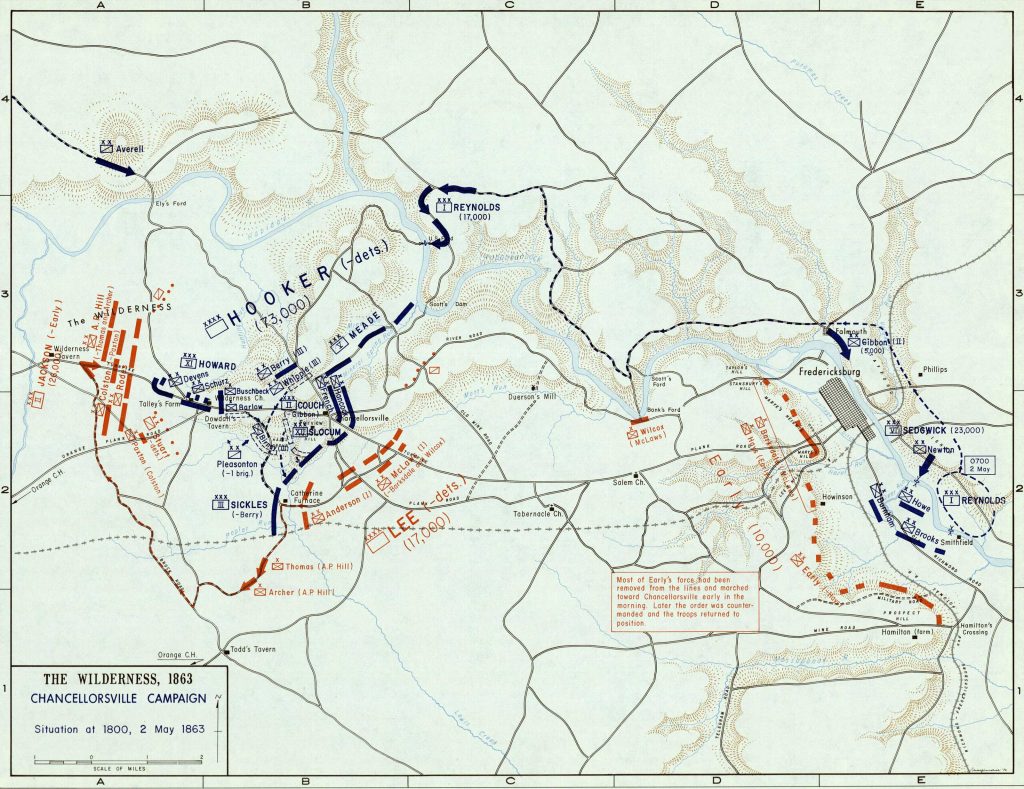
Twenty-five minutes later, Butterfield confirmed the messages receipt, but wondered, “Can’t you take Fredericksburg tonight, so we can commence railroad and telegraph and pontoon bridge by daylight?”[4] As Sedgwick, and even Butterfield, tried divining what the army commander wanted from the Sixth Corps, the men of the Greek cross had spent the evening marching and countermarching. “There was so much change in these positions that it was midnight before the men were in their places or had a chance to eat supper,” wrote a New York Herald correspondent embedded with the 65th New York Infantry. “When once they were at rest no fires were permitted, and so but few suppers were eaten; for a soldier does not care for a cold bite at that hour. By an admirable combination of strategy and tactics one mess did get a kettle of coffee made, and we had the good fortune to be one of that mess.”[5]
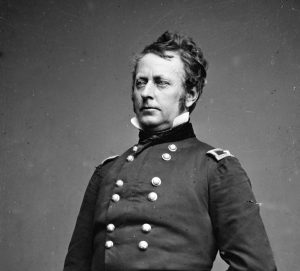
Hooker finally sent a clear message outlining his expectations, though he still lacked on understanding of the Sixth Corps’ current position. Butterfield forwarded the order at 10:10 p.m., but it did not reach Sedgwick until 11 o’clock. “The major-general commanding directs that you cross the Rappahannock at Fredericksburg on the receipt of this order, and at once take up your line of march on the Chancellorsville road until you connect with him. You will attack and destroy any force you may fall in with on the road. You will leave all your trains behind except the pack-mule train of small ammunition, and march to be in the vicinity of the general at daylight. You will probably fall upon the rear of the forces commanded by General Lee, and between you and the major-general commanding he expects to use him up.”[6]
By this time, Hooker’s force had felt the full blow of Jackson’s assault and the Union troops had patched together a defense around the Chancellorsville tavern. Hooker wanted Sedgwick in position by morning to attack the rear of two Confederate First Corps divisions in between Fredericksburg and Chancellorsville. The demand flabbergasted the Sixth Corps staff. “General Sedgwick was directed to move up the river to Fredericksburg, take the Heights, and to move out some fifteen miles from Fredericksburg to attack Lee’s rear by daylight,” recalled Major Thomas W. Hyde, an aide. He had cause for concern. “We were about four miles from Fredericksburg, the corps was in line of battle facing the enemy, and it was pitch-dark.”[7]
Sedgwick selected John Newton’s division to lead the march, followed by Burnham’s light division, then Albion P. Howe. Jubal Early still had four strong Confederate brigades along Prospect Hill. Hooker’s orders had not taken them into consideration. His route outlined to Sedgwick would invite attack on the column, so Sedgwick left William T.H. Brooks’s division in the bridgehead to cover the corps’ march north into town.
The arrangements took time, too much time Hooker afterward insisted. Between 12:30 a.m. and 1 o’clock, the column started forward into the dark. Alexander Shaler’s brigade led Newton’s division north along the Bowling Green Road. Lieutenant Colonel Joseph E. Hamblin’s 65th New York Infantry marched at the head of the column. “Our Brigade was honored with the advance and instructed to let nothing impede the march through the town, over the heights and out on the Chancellorsville road,” Shaler later recalled, “an easy order for a General to give, but not easy of executing, in the presence of a wide awake enemy, holding earthworks across your path, an effort to take which had already cost 15,000 lives.”[8]
Skirmishers from Harry Hays’s Louisiana brigade and William Barksdale’s Mississippians lurked to the west of their path, occasionally sending a minie ball into the shadowy files on the road. “The night was dark and the road made darker by the foliage of trees on either side,” recalled First Lieutenant Huntington W. Jackson, of Newton’s staff. “The progress was necessarily slow. Frequent halts were made while the skirmishers were feeling their way.”[9] Colonel Silas Titus’s 122nd New York Infantry followed behind the 65th. “Thus we felt our way along a strange road and near the enemy expecting every moment we should catch a fire from an unseen foe,” wrote First Lieutenant Herbert S. Wells. “We had flankers thrown out on each side of the column from each company.”[10] Sergeant Stuart McDonald noted, “It was poky work creeping along in the dark, with a lively spattering of picket firing going on in front.”[11]
When Shaler’s vanguard approached within 500 yards of the city, they were met by a sharp volley from two companies of the 21st Mississippi Infantry. The Confederates used the cover of darkness to mask their numbers and stretch a long line that provided enfilading fire on the Bowling Green road bridge across Hazel Run. Additional scattered elements of Barksdale’s brigade flocked to the southern end of the city to contest the Sixth Corps’ advance. A detachment took shelter inside J. Warren Slaughter’s house on Hazel Hill and additional riflemen lined a short, sunken road that led north to an erected barricade across the road at the Fredericksburg’s outskirts. More Mississippians crammed into the small tenant homes at the southern end of Prince Edward, Charles, and Princess Anne streets. Another detachment waited across a small ravine that flowed into Hazel Run below Knight’s brickyard.

This show of force ground the already slow Federal column to a halt. Newton rode in the middle of his lead brigade. Incensed by the delay, he called out in the darkness, “Is any one of my staff here?” Lieutenant Jackson responded and the division commander ordered him to “ride along and tell Shaler to brush away the enemy’s pickets.”[12]
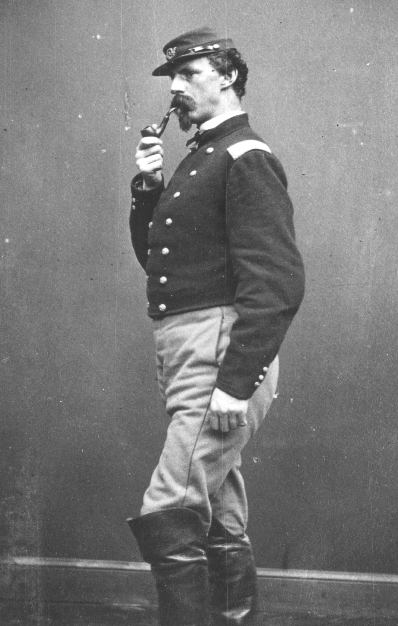
Jackson found the road “filled with soldiers, some lying down, others resting on their guns, but a passage was quickly cleared.” He found Shaler standing with Hamblin south of Hazel Run and delivered Newton’s message to brush away the Mississippians. “Here the enemy had made a determined resistance,” Jackson recalled. “Colonel Hamblin, you have heard the order from General Newton?” Shaler asked in a subdued tone and the 65th’s commander rushed off, formulating a plan to clear the Hazel Run bridge. “A shout, a bright, sudden flash, a roll of musketry followed,” Jackson recalled as the New York regiment disappeared into the dark.[13]
Hamblin immediately deployed three companies eighty yards to the left of his regiment to engage the Confederates posted on the hill south of the brickyard. He sent another company to draw the fire of the Mississippians on Hazel Hill, while leading the remainder of the regiment forward to the bridge. A Confederate volley struck seven of his men as they attempted to cross Hazel Run, including Major Henry G. Healy, hit in the abdomen, who feared a mortal wound. “It’s all over with me, Joe,” he bid Hamblin. “Goodbye.”[14]
An undeterred Hamblin, whose horse was struck during the charge, noted that the “fire was heavy from three sides, but badly directed.” He determined to cross the stream and sent another company to the right to push the Confederates off Hazel Hill. The five remaining companies numbered 130 men and the converging crossfire had sunk their morale. “The men felt they were surrounded, and for a moment hesitated,” Hamblin recalled.[15] “They had us at a disadvantage,” worried Private Francis Metcalf, who stood with the colors with 15 to 20 other men on the road. “We had to either be shot down or run to the rear or front.”[16]
Hamblin dismounted his wounded horse and rallied the men to fix bayonets, shouting, “Boys, we must charge them on them!” The raking Confederate fire swept the bridge so many of the New Yorkers plunged into Hazel Run. “Charge bayonets!” bellowed the lieutenant colonel. “Off we started through the creek,” recalled Private Edward B. Weiant, “the enemy throwing a murderous fire on us.” His friend Johnny Felter was shot in the head as they climbed the slope at the quick step. Several more soon fell on his left. “It was awful to hear the balls whiz past our ears,” he recalled, but Weiant continued onward.[17]
“When we got about halfway up the hill Sergeant [William C.] Hinman and I were ten paces in front of the Company, and the balls flying thick and fast around us, when he fell, shot in the side somewhere; he was a brave man I can tell you; he was urging on the Company all the time. I was just beside him when he was hit. He said, ‘Oh dear,’ and fell over on his back. I stepped up to him, and asked if I could help him, he said ‘no, go on.’ I looked back to see where the Company was, and seeing them come up, I asked him again, if I could help him? He said ‘no,’ and pulling a little book out of his pocket, gave it to me, and said, ‘Give that to my wife.’ That was all he said. I was very sorry to leave him, but I had to go with the Company.”[18]
Hinman was the lone fatality of the charge. Sergeant William E. Sleight, corporals George W. Butcher, Charles Connolly, George N. Gibson, and Malcolm Rice, and privates Hugh Conner, John M. Conroy, William J. Donnelly, William Ely, John E. Felter, Dennis Flannery, Daniel Lake, Jr.. John Murdock, and Nathan Philboner were all wounded in the attack.
Surgeon William C. Roller, 23rd Pennsylvania Infantry, treated the wounded New Yorkers. He instructed his assistant, wo carried the medicine chest, “to find a house with a piano and saw the legs off so it could be used as an operating table.” The assistant reported back with the makeshift bed as Roller “was arranged to transact business.” One of his first patients was Major Healy, an old friend. Roller was unable to locate the place where the ball had passed out and supposed his friend to be mortally wounded. He could not bear to break the news to the major and told Healy that he would send him back across the Rappahannock and then home to his parents.[19]
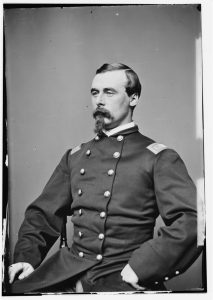
The following winter, Roller was writing a letter in his quarters when a knock came on his tent pole. “Come in,” he called out and, to his great surprise, Healy entered. “Why, Major, old boy, how did you manage to survive?” Healy replied: “It wasn’t such a bad wound after all. When I got home and was carried to bed, the old family doctor was called in, and of course started to examine me, but I was so sore and swelled up that I kicked about being turned over, but he would have his own way turning me over he found that the ball had passed entirely around me, coming out at the point of entrance, it could be plainly traced by the line of inflammation.”[20]
Meanwhile, the New York storming party swept up to the entrance of the city while Hamblin’s flankers swept the hills on either side of the road, driving the Mississippians away from their bridge overlook. “We gave them a volley, fixed bayonets, and with a genuine Yankee yell charged them from their position,” recalled Private Metcalf, who claimed the Confederates withdrew, “probably thinking the balance of our troops were at our heels.”[21]
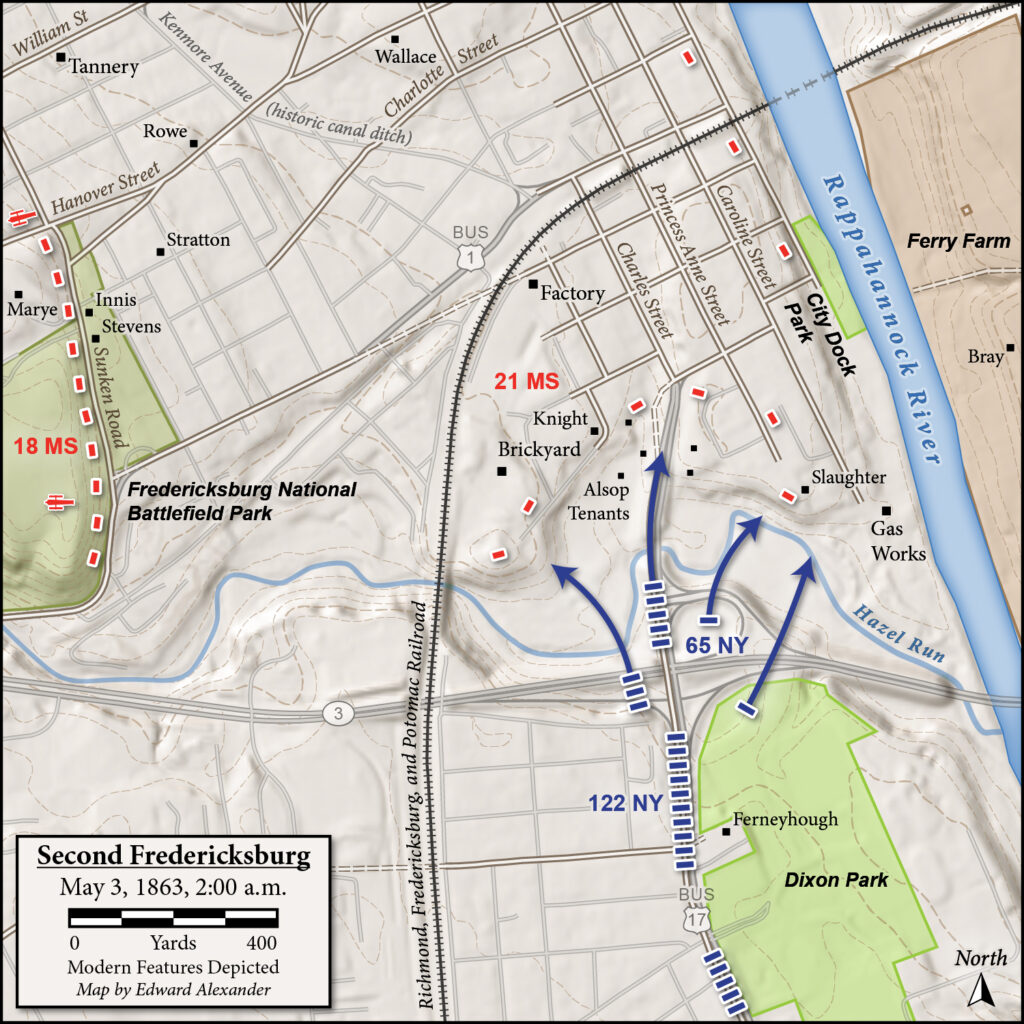
The rest of the corps was still strung down the Bowling Green road for several miles as Hamblin’s men continued fighting their way house-to-house into Fredericksburg. The New York Herald correspondent declared, “It was a bold feat to enter a place like this, where every house might suddenly open upon us like a mine. But the result justified the apparent rashness of the venture.”[22]
Though pleased with their successful capture of the city, it was now nearly 3 a.m. and Sedgwick’s corps still had more than seven miles to reach Zoan Church, Hooker’s designated objective, by dawn. Early’s four brigades still poised a threat to the rear, Barksdale remained in front, ensconced behind the imposing stone wall at Marye’s Heights, with additional support available from Cadmus Wilcox’s Alabamians.
Shaler’s brigade felt their way forward toward the wall, determined its strength, and returned to Fredericksburg as the rest of the Sixth Corps piled into the city. Sedgwick opted against testing the formidable heights and attempted to flank the position, which just frittered away additional valuable time. Begrudgingly, Sedgwick eventually accepted that only one option remained—charging the stone wall. Newton, Howe, and Burnham’s men seized the slope in dramatic fashion late the morning, but the delays proved costly. As the men of the Sixth Corps stood atop the “Gibraltar of the South,” Hooker pulled the rest of the Army of the Potomac into a tight shell north of Chancellorsville. Withering assaults by Lee had gotten the best of Fighting Joe, but Hooker adamantly believed that Sedgwick’s inability to reach Zoan Church by dawn had doomed his plan.
“I am perfectly satisfied with the part my corps took in [the campaign], and their conduct was admirable,” Sedgwick wrote to his sister on May 6th. “All the success we had was obtained by this corps.” He knew that Hooker would seek to make him the scapegoat. “Believe little that you see in the papers. There will be an effort to throw the blame for the failure on me, but it will not succeed. My friends here will do me justice.”[23]
Despite his assurance, the Joint Committee on the Conduct of the War agreed with Hooker. “The movement of General Sedgwick was not made with that energy and promptness which the peremptory character of his orders demanded and the importance of the emergency required,” concluded Chairman Benjamin F. Wade, who declared that the “movement directed by General Hooker was perfectly feasible.” Wade elaborated, “If his orders had been promptly carried out by General Sedgwick, in all probability a fatal blow would have been struck General Lee’s army. As it was, however, the movement was made without promptness and energy, was executed but partially, and proved entirely ineffective for the purpose for which it was ordered.”[24]
The men of the Sixth Corps knew better. “How different everything might, nay, would have been, if we had the cooperation of even a small part of the immense force with Fighting Joe Hooker!” expressed Captain Richard F. Halsted, of Sedgwick’s staff.[25] “Like everything else this army has ever undertaken, it all comes to nothing,” vented Hamblin. “There appears to be no concert of action; and this, like all our vast combinations, has been defeated in detail.”[26]

Criticism of Sedgwick’s caution is certainly warranted, but every message he received brought an entirely new route of march, so it is easy to understand why the corps was not prepared to immediately advance when clear orders finally arrived late on May 2nd. Despite Wade’s ruling, it is hard to envision a feasible way for Sedgwick to accomplish Hooker’s task—turn his back on a full Confederate division to march through an enemy city, cut his way through two brigades (across the infamous field below Marye’s Heights), rush westward without regard to the six Confederate brigades lurking at his heels, continue to Zoan Church, and batter two full divisions without assistance from the six corps under Hooker’s command.
Many of the units who fought at Second Fredericksburg and Salem Church had seen combat before, but this was the first time that Sedgwick’s corps fought together as a unit. This initial campaign would serve as a building block for future success and there was much of which to be proud. They had fought their way across the Rappahannock, seized Fredericksburg, stormed the stone wall, battled to a draw at Salem Church the following day, and safely extracted themselves back across the Rappahannock River after Hooker abandoned them to their own fate.
“Were not the shot-torn banner of the 6th corps waving as proudly as ever?” wondered Major Hyde. “Who now or hereafter, friend or foe, could criticize our fighting or fame? … This was glory enough for our young hearts, and we began to be eager for the time when we could meet the enemy again, could it only be under a general who equaled the ability on the other side.”[27]
Sources:
[1] J.H. Van Alen to Daniel Butterfield, May 2, 1863, OR 25, pt. 2, 363.
[2] Daniel Butterfield to John Sedgwick, May 2, 1863, OR 25, pt. 2, 363.
[3] John Sedgwick to Daniel Butterfield, May 2, 1863, OR 25, pt. 2, 364.
[4] Daniel Butterfield to John Sedgwick, May 2, 1863, OR 25, pt. 2, 365.
[5] “Second Battle of Fredericksburg,” New York Herald, May 5, 1863.
[6] Daniel Butterfield to John Sedgwick, May 2, 1863, OR 25, pt. 2, 365-366.
[7] Thomas W. Hyde, Following the Greek Cross, or, Memories of the Sixth Army Corps (Boston: Houghton, Mifflin and Company, 1894), 122.
[8] Shaler’s Brigade, Survivors of the Sixth Corps: Re-union and Monument Dedications at Gettysburg, June 12th, 13th and 14th, 1888 (Philadelphia: Published by Order of the Brigade Association, 1888), 23.
[9] Huntington W. Jackson, “Sedgwick at Fredericksburg and Salem Heights,” Robert U. Johnson and Clarence C. Buel, eds., Battles and Leaders of the Civil War, Volume 3 (New York: The Century Co., 1884), 225.
[10] David D. Swinfen, ed., Ruggles’ Regiment: The 122nd New York Volunteers in the American Civil War (Hanover, NH: University Press of New England, 1982), 19.
[11] Stuart McDonald to “Dear Monitor,” May 9, 1863, Kathy Crowell, ed. “The Onondagas: A History of the 122d Regiment, New York Volunteers” (Fayetteville, NY: N.p., 1998).
[12] Jackson, “Sedgwick at Fredericksburg and Salem Heights,” 225.
[13] Ibid, 227.
[14] “Second Battle of Fredericksburg,” New York Herald, May 5, 1863.
[15] Joseph E. Hamblin letter, May 23, 1863, Deborah Hamblin, ed. Brevet Major-General Joseph Eldridge Hamblin, 1861-1865 (Boston: Privately Printed, 1902), 31.
[16] F.W. Metcalf, “The Chasseurs: Lively Doings in the Valley and on the Peninsula,” National Tribune, June 21, 1894.
[17] Edward B. Weiant to “Dear Father and Mother,” May 3, 1863, Rockland County Messenger, May 14, 1863.
[18] Ibid.
[19] William J. Wray, History of the Twenty Third Pennsylvania Volunteer Infantry, Birney’s Zouaves (Philadelphia: Survivors Association, 1904), 144.
[20] Ibid.
[21] Metcalf, “The Chasseurs.”
[22] “Second Battle of Fredericksburg,” New York Herald, May 5, 1863.
[23] John Sedgwick to Emily Sedgwick, May 6, 1863, Carl and Ellen Stoeckel, eds., Correspondence of John Sedgwick Major-General, Volume 2 (New York: De Vinne Press, 1902), 92.
[24] Report of the Joint Committee on the Conduct of the War, at the Second Session Thirty-eighth Congress (Washington: Government Printing Office, 1865), xlvii-xlviii.
[25] Richard Halsted to Emily Sedgwick, May 13, 1863, Stoeckel, Correspondence of John Sedgwick, 125.
[26] Joseph E. Hamblin, May 6, 1863 letter, Hamblin, Brevet Major-General, 29.
[27] Hyde, Following the Greek Cross, 135-136.
1 Response to The Night March into Fredericksburg, May 2-3, 1863